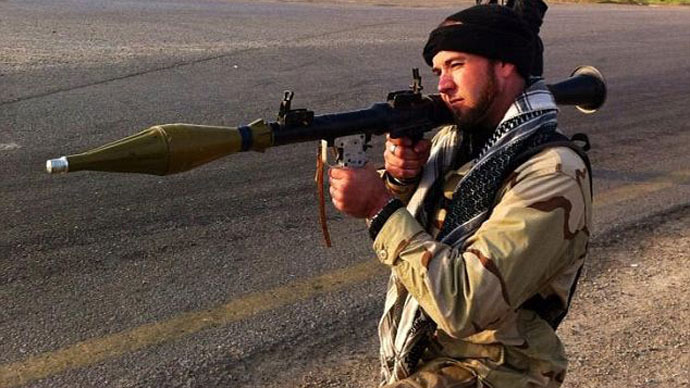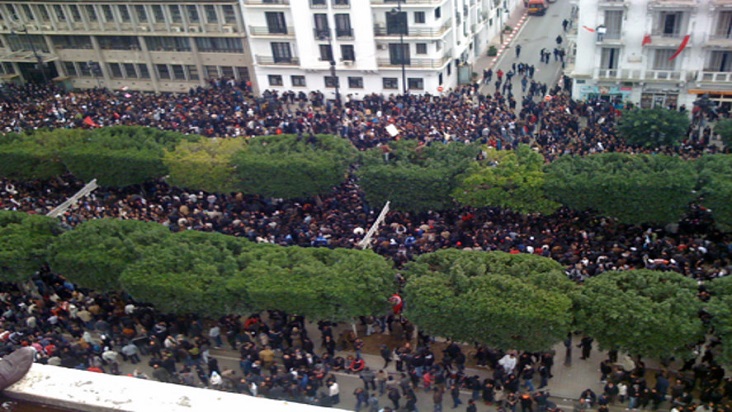Touraj Riazi had the great privilege of interviewing former director of the Missile Defense Agency Lt. General (Ret’d) Patrick O’Reilly. Lt. Gen. O’Reilly enjoyed a lengthy and distinguished career in the Army where he occupied a variety of positions including Program Manager for the Directed Energy Programs, Patriot Missile PAC 3, THAAD, and the Ground based Midcourse Defense Program. Lt. Gen. O’Reilly culminated his career with being appointed Director of the MDA from 2008-2012. Here is Part 1 and Part 2 of our interview.
What can you tell me about the order in which specific interceptors are launched from GBIs? Is there a specific mechanism that determines, in a real crisis, whether CE II or CE I warheads are launched first?
The fire control system is comprised of many, redundant, high-speed processors. Complex algorithms take into account hundreds of variables to make split second decisions (about the status, composition, configuration, weight, age, maintenance history, etc. of each interceptor). All of these variables are taken into account and fire control also accounts for when the last interceptor launch was and when the next one is.
Fire control is overseen by the people who maintain and operate the system. The system performs to its best ability, the highest probability of executing what the operators tell it to do, and the operators determine the launch criteria- called a shot doctrine. That shot doctrine depends on how many interceptors are available, the number of threat missiles, when you shoot, and many other variables. Shot doctrine is also affected by the sensors that are operational at that moment. It’s also affected by whether one is confronted with an intercept that no one foresaw, which is a low probability, or whether it is one where intelligence indicated that we needed to be at higher levels of alert. To answer your question, that and hundreds of other variables are taken into account. I can’t address them, because they’re constantly changing, that’s what the people who maintain the system do, its constantly being updated.
Are GMD, and radars like SPX and STSS, capable of operationalizing America’s deterrence doctrine and of also meeting legal requirements?
Again, I have been asked many times about GMD, whether its good enough, and if it will work. The most credible answer I can give is that we do not know why it would not work. What we have shown in our testing is where we need to improve reliability and we make improvements.
There was a test regime that was defined while I was director at MDA, that was submitted to Congress in 2009, and that test regime laid out in tremendous detail- there’s unclassified versions of it- what needed to be demonstrated in testing in order to have a credible assessment that the system can work in a manner which was intended by the law.
We have not completed that testing. The recent test on May 31st was another step. May 31st’s test objectives were set almost 8 years ago and there is more testing to occur. That’s not enough. This test program was not just created by MDA, we also worked very closely with the operational commands and the DOD testing organizations.
I have been away for 4.5 years so I do not know if there is some new flaw in the system, but I did not know of one when I left. The deficiencies in the system that were identified were all correctible, as were those that we had corrected from previous tests.
Another thing to note about the flight testing is that each test is harder and more aggressive than the previous test. I’ve seen people discussing the percentage of successes and failures that have been attributed to GMD. That’s really not an accurate metric to measure the capability of the system because if you were just trying to repeat the same test over and over again, then that would be a way of having some idea of the reliability or the effectiveness of the system. However, what is different, is that each test has more difficult goals to achieve relative to the previous tests as we learn from each test.
The rate of testing is driven by two things: cost and the tremendous amount of data which is created by these tests. When we would conduct tests, we typically would get an initial assessment of what happened; but, to have a true and complete understanding of what exactly happened in a test is a lengthy and complex data analysis process.
Consider all the data that must be reduced and analyzed. These are complex large systems, especially the GMD. To know anything, it takes at least a 100 days of dedicated teams working through the data including engineers alongside many companies and government agencies that are also involved. I have never seen a test where a 100 days later we did not learn something new after all that analysis that we did not know before a test. They’re tremendous learning experiences, but they’re very, very hard to use as a comprehensive measure of the status of BMDS readiness. It’s probably the best indicator we have, but it’s very hard to use a single test result as an accurate measurement of the maturity and the reliability of the system.
It takes a very long time to go through the data, and I had a lot of pressure on me when I was a director, to accelerate the testing. I had Congressmen and others stating why are you not testing 4 times a year? If it really takes you half a year to understand what happened in the previous test, or even if its 90 days, you need to complete that understanding of what happened in the previous test before attempting the next test, to ensure you’re not going to repeat something that you already know is a failure.
By frequently repeating many tests, you will improve your success statistics, but you’re not going to necessarily learn as much as if you test them in a very methodical way. Now these tests typically cost tremendous amounts of money. The GMD test costs can easily reach $ USD 200 million. When you announce the cost of testing 3 or 4 times a year, then suddenly you get less pressure to test less frequently.
What I think should determine the priority of the funding and the pace of the testing, is the time it takes to completely analyze from a military and engineering point of view, the previous test results before you attempt the next report. That is a very methodical pace, and we have been fortunate enough to have had the time to do that.
People are surprised how long it takes to plan and prepare for a GMD test, but this is not surprising to me. There are thousands and thousands of pieces, parts, and components involved in every aspect of testing. Just as important as the interceptors are the sensors. They’re going through testing all the time; but, this is not public knowledge because it then can be tested in a way that does not attract attention. There is a tremendous amount of testing that is always going on but you don’t see it because it involves tracking objects in space, the command and control, the software and so on. The very public testing is the interceptor testing and that is when public interest in the system peaks and when North Korea or Iran defies U.N mandates and treaties by conducting missile tests.
Since not all of the warheads used in testing have been hand made, is there an absence of a stable testing constant? Do warheads not become variables, which impact the cost of testing and also decreases the likelihood of discovering problems in the event of testing?
Yes. It doesn’t necessarily mean that the interceptors that are handmade are any less capable, but it tremendously increases their costs. Our smaller systems are mass produced which greatly reduce the cost and increase the reliability of the system.
When you are hand building something, your only option is to “inspect-in the quality into components” and that inspection approach easily doubles the cost of an interceptor because of the labor involved. But, missile defence reliability requirements are no different than space requirements.
We’ve been operating in space for more than 50 years, using “space qualified” hardware, which is a term widely used in the aerospace industry. Space qualified hardware are usually low in quantity, but require a tremendous amount of inspection to validate that it meets all its extremely high reliability specifications. We’ve mostly met those requirements for 50 years.
Is accurately detecting and identifying the target in both the development and testing phases more important than guaranteeing an accurate intercept by an EKV?
Both are necessary, so you can’t deemphasize one at the expense of the other. You have to have them both. I have a hard time answering your question frankly because both functions have to perform in a very precise way. You’re not going to be very successful without precise performance because of the tight tolerances required for a missile intercept. This entails something flying thousands of miles an hour and you’re trying to literally hit an object that is about 3 feet across. If you don’t have a precise sensor system you will not give the interceptor the opportunity to do its job.
The one thing about the radars that’s nice is where redundancy can actually be added to the system. Not only redundancy in location, but redundancy in the way radars are built. The cost of developing high reliability precision sensor systems on the ground is much lower than the cost of doing it on an interceptor just from the fact the interceptor is expended during its mission.
Interceptors sit there for many years, and then within a few seconds they have to operate precisely, whereas a radar can be tested and monitored continuously. Since I left MDA, I’ve read that they have incorporated satellite sensor participation in their flight tests and they have been continually adding to the network of sensors.
Again, what Congress needs to see is a systems level view of the capability, not an individual component view. MDA provides Congress information about where you get your greatest increase in capability at the system level by incremental investments.
What options would remain in intercepting a missile should a radar be unable to either discriminate against a target or send the information to the interceptor which would then be able to identify that target?
As far as communications go, there are multiple approaches to having greater communications reliability with an interceptor. One way to do it is to have redundancy, where you have multiple systems that you would want your interceptor to receive the data from, and you have multiple transmitters in different locations with different types of systems. Or, you can invest in new technologies with longer range and lower the chances of a communications interruption.
One of the nice things about strategic defence, as you observed in the test on May 31st, is if there is a drop out of communication you have the time to attempt many opportunities to reestablish that communication, since, unlike a tactical system, where the tests occur in a matter of seconds, strategic tests occur over many minutes.
However, one of the nice things about tactical BMD systems is that their interceptors are usually within the line of sight of the transmitters throughout the interceptor’s entire flight. While I was at MDA, we identified many aspects of communication that could be improved. I know that the agency was planning on addressing those. I have no knowledge of what happened after that, but my assumption was that all required improvements were made.
Another interesting thing is that when you talk about a sensors capability in missile defence, you really can’t do it without looking at geography. In other words, a poorly performing radar that is in the right location is much more effective than an extremely capable radar which is not in the right geographical location. A good example is our A/N TPY-2, the X band radar that is in Turkey. The one in Turkey is in a wonderful position to be in front of anything that is coming out of Iran towards the U.S and so its capabilities are tremendously better than if we had parked the SBX in the Baltic Sea or in the Eastern Atlantic.
The SBX with all its tremendous capability is not going to be as effective as that one little radar that’s in the right location. Therefore, the value of those TPY-2 radars is not their inherent discrimination capability, their range, and their power. It is their ability to be located in optimal locations where they get a great view of threatening missile launches. That’s why missile defence, especially at the strategic level, is very dependent on geopolitics. If we have allies that do not afford us those forward locations and we have to rely on the U.S capabilities only, we would be greatly reduced in our capability. That’s why working with NATO is so important because it expands tremendously our ability to insert detection and sensor systems in optimal locations which provide you with an enhanced capability over a more sophisticated radar located elsewhere.
The one thing that the U.S has done is invested heavily in its Aegis systems on ships. The nice thing about navy systems is that they allow you to operate in a lot of areas of interest around the world such as the coastal communities, peninsulas, or other bodies of water where you have freedom of navigation. So the Navy’s Aegis system makes sensor deployments, such as that in Turkey, less indispensable.
Photo: Lt. Gen. Patrick O’Reilly via Department of Defense. Public Domain.
Disclaimer: Any views or opinions expressed in articles are solely those of the authors and do not necessarily represent the views of the NATO Association of Canada.




